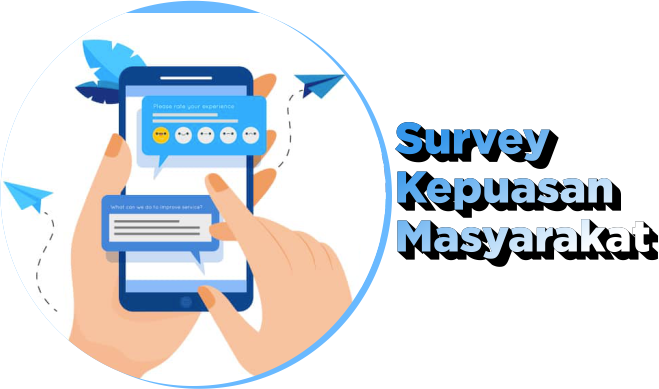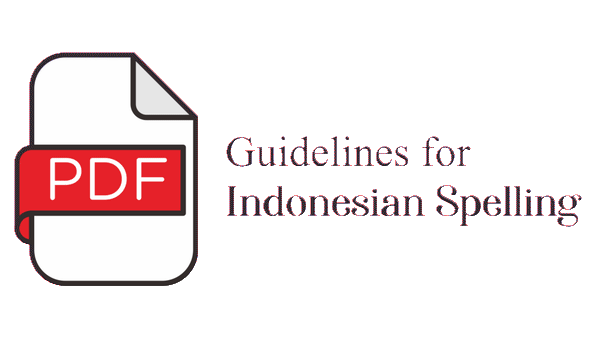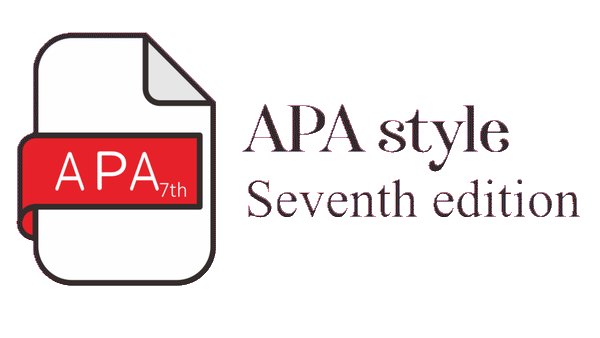Analisis Efisiensi Teknis dan Gap Teknologi Industri Pengolahan Perikanan di Indonesia: Pendekatan Metafrontier DEA
Abstract
Industri pengolahan perikanan di Indonesia mengalami kondisi inefisiensi yang disebabkan oleh kurangnya pasokan bahan baku, sarana yang kurang mencukupi dan penggunaan faktor produksi yang kurang maksimal. Disamping itu, lokasi industri perikanan yang menyebar di Seluruh Indonesia dan tidak terpusat menambah permasalahan tersebut. Tujuan penelitian ini adalah untuk menganalisis efisiensi teknis dan gap teknologi dari industri pengolahan perikanan yang ada di Indonesia. Data yang digunakan adalah data cross section Industri Sedang/besar sebanyak 1.703 industri. Analisis metafrontier DEA digunakan untuk menganalisis dan memperkirakan metafrontier, grup frontier, dan total gap ratio (TGR) industri pengolahan perikanan yang ada di 26 provinsi seluruh Indonesia . Terdapat 1 output (hasil produksi) dan 5 input (modal, bahan baku, tenaga kerja, lahan dan energi). Hasil penelitian ini menunjukkan bahwa Grup 3 (Jawa Timur) memiliki persentase perusahaan efisien terbesar, yakni 67%, kemudian disusul oleh Grup 5 (provinsi lainnya) dengan nilai sebesar 65%. Sementara itu, Grup 4 (Sulawesi) merupakan wilayah dengan persentase perusahaan dengan efisiensi paling rendah, yakni hanya sebesar 38%. Hasil dari TGR menunjukkan bahwa makin tinggi nilai TGR makin kecil kesenjangan (gap) antara grup frontier dan metafrontier. TGR di Grup 3 menunjukkan nilai tertinggi, yaitu 0,977. Artinya, perusahaan yang terdapat di grup tersebut memiliki potensi peningkatan performa perusahaan sebesar 2,3% yang dapat ditingkatkan melalui investasi, pembangunan infrastruktur, dan manajemen perusahaan. Namun, masih ada beberapa daerah yang memiliki efisiensi rendah. Oleh karena itu, tingkat efisiensi input masih perlu ditingkatkan, sedangkan biaya produksi harus dikurangi. Selain itu, perusahaan harus meningkatkan kemampuan manajemen dan meningkatkan efisiensi produksi serta efisiensi energi.
Title: Technical Efficiency and Technology Gap of Fisheries Processing Industry in Indonesia: Meta-Frontier DEA Approach
The fisheries processing industry in Indonesia is experiencing inefficiency caused by a lack of supply of raw materials, inadequate facilities and the use of production factors that are less than optimal. In addition, the location of the fishing industry which is spread throughout Indonesia and is not centralized adds to these problems.The purpose of this study is to analyze the technical eflciency and technological gap of the fisheries processing industry in Indonesia. The data used is cross section data for medium/large industries as many as 1,703 industries. Metafrontier DEA analysis was used to analyze and estimate the metafrontier, frontier groups, and total gap ratio (TGR) of the fishery processing industry in 26 provinces throughout Indonesia. There are 1 outputs (production) and 5 inputs (capital, raw materials, labor, land and energy). The results of this study indicate that Group 3 (East Java) has the largest percentage of eflcient companies, i.e. 67%, followed by Group 5 (another provinces) with a value of 65%. Meanwhile, Group 4 (Sulawesi) is the region with the lowest percentage of companies with eflciency at only 38%. The results of the TGR show that the higher the TGR value, the smaller the gap between the frontier and meta-frontier groups. The TGR in Group 3 shows the highest value of 0,977. This means that the companies in this group have the potential to increase the company’s performance by 2,3%, which can be increased through investment, infrastructure development, and industry management. However, there are still some areas that have low eflciency. Therefore, the level of input eflciency still needs to be improved, while production costs must be reduced. In addition, companies must improve management capabilities and improve production eflciency as well as energy eflciency.
Keywords
Full Text:
PDFReferences
Álvarez, A., Couce, L., & Trujillo, L. (2020). Does special- ization affect the efficiency of small-scale fishing boats? Marine Policy, 113, 103796. doi:https://doi. org/10.1016/j.marpol.2019.103796
Banker, R. D., Charnes, A., & Cooper, W. W. (1984 ). Some models for estimating technical and scale inefficiencies in data envelopment analysis. Management science, 30(9), 1078-1092. https:// doi.org/10.1287/mnsc.30.9.1078
BPS. (2017). Indonesia’s Central Statistic Agency. Jakarta, Indonesia. Retrieved from https://silastik.bps. go.id/v3/index.php/site/login/
Direktorat Kelautan dan Perikanan Kedeputian Bidang Kemaritiman dan Sumber Daya Alam BAPPENAS. (2016). Kajian Strategi Industrialisasi Perikanan Untuk Mendukung Pembangunan Ekonomi Wilayah. Kemetrian PPN. (Online) Diakses pada 24 April 2021. https://www.bappenas.go.id/ files/4115/0459/9921/Ringkasan-Kajian-Strate- gi-Industrialisasi-Perikanan-Untuk-Men- dukung-Pembangunan-Ekonomi-Wilayah.pdf
Eigaard, O. R., Marchal, P., Gislason, H., & Rijnsdorp, A. D. (2014). Technological development and fisheries management. Reviews in Fisheries Science & Aquaculture, 22(2), 156-174. https://doi.org/10.1080/23308249.2014.899557
Ermaya, H. N. L., & Mashuri, A. A. S. (2020). The Influence of Environmental Performance, Environmental Cost and ISO 14001 on Financial Performance in Non-Financial Companies Listed on the Indonesia Stock Exchange. Neraca: Jurnal Akuntansi Terapan, 1(2), 74-83. https://doi.org/10.31334/neraca.v1i2.857
FishStatJ. (2017). Database and Software for Fishery Statistical Analysis. Retrieved from http://www.fao.org/fishery/statistics/software/fishstatj/en
Hayami, Y., & Ruttan, V. W. (1970 ). Agricultural productivity differences among countries. The American economic review, 895-911. Retrieved from: https://www.jstor.org/stable/1818289
Kementerian Kelautan dan Perikanan Republik Indonesia. 2021. Siaran Pers Kementerian Kelautan dan Perikanan. https://kkp.go.id/artikel/33048-treng- gono-bawa-sektor-perikanan-tumbuh-9-69-pers- en-di-triwulan-kedua-2021#:~:text=Masih%20 berdasarkan%20data%20BPS%2C%20nilai,perse- n%20terhadap%20nilai%20PDB%20Nasional. (Online). Diakses pada tanggal 05 Februari 2022.
Le, V., Vu, X.-B. B., & Nghiem, S. (2018). Technical efficiency of small and medium manufacturing firms in Vietnam: A stochastic meta-frontier analysis. Economic Analysis and Policy, 59, 84-91. https://doi.org/10.1016/j.eap.2018.03.001
Li, L. b., Liu, B. l., Liu, W. l., & Chiu, Y. H. (2017).Efficiency evaluation of the regional high-tech industry in China: A new framework based on meta-frontier dynamic DEA analysis. Socio- Economic Planning Sciences, 60, 24-33. https:// doi.org/10.1016/j.seps.2017.02.001
Liang, F. H. (2017). Does foreign direct investment improve the productivity of domestic firms? Technology spillovers, industry linkages, and firm capabilities. Research Policy, 46(1), 138-159. https://doi.org/10.1016/j.respol.2016.08.007
Lin, B., & Zhao, H. (2016). Technology gap and regional energy efficiency in China’s textile industry: a non-parametric meta-frontier approach. Journal of Cleaner Production, 137, 21-28. https://doi.org/10.1016/j.jclepro.2016.07.055
Lin, B., & Du, K. (2013). Technology gap and China’s regional energy efficiency: a parametric metafrontier approach. Energy Economics, 40, 529-536. https://doi.org/10.1016/j.eneco.2013.08.013
Medal-Bartual, A., Garcia-Martin, C.-J., & Sala-Garrido, R. (2012). Efficiency analysis of small franchise enterprises through a DEA metafrontier model. The Service Industries Journal, 32(15), 2421-2434. https://doi.org/10.1080/02642069.2012.677829
O’Donnell, C. J., Rao, D. P., & Battese, G. E. (2008 ). Metafrontier frameworks for the study of firm-level efficiencies and technology ratios. Empirical economics, 34(2), 231-255. https://doi. org/10.1007/s00181-007-0119-4
Purbani, D, Abdullah A.D.Y, Eva M, Hadiwijaya, L.M, dan Aida H. (2016). Pengembangan Industri Perikanan Tangkap di Perairan Barat Sumatera Berbasis Ekonomi Biru. Jurnal Manusia dan Lingkungan. 23(2). 233-240. https://doi. org/10.22146/jml.18795
Sari, H.U, Agus, P.W, dan Dedy H. (2019). Analisa Metode Data Mining Pada Produksi Perikanan Laut Yang Dijual di Tempat Perikanan Ikan (TPI). KOMIK. 3 (1). 630-636. http://dx.doi.org/10.30865/komik.v3i1.1671
Sawilowsky, S. & Fahoome, G. (2014). Kruskal-Wallis Test: Basic. In Wiley StatsRef: Statistics Reference Online (eds N. Balakrishnan, T. Colton, B. Everitt,W. Piegorsch, F. Ruggeri and J.L. Teugels). https://doi.org/10.1002/9781118445112.stat06567
Sofiati, D., Fattah, M., Purwanti, P., Anandya, A., & Aisyah, D. (2022). Tipologi Ekonomi Dan Daya Saing Sektor Perikanan Provinsi Jawa Timur. JFMR (Journal of Fisheries and Marine Research), 6(2), 1-8. https://doi.org/10.21776/ub.jfmr.2022.006.02.1
Talib, A. (2018). Peluang dan Tantangan Industri Teknologi Pengolahan Hasil Perikanan dalam Mendukung Terwujudnya Lumbung Ikan Nasional (LIN) di Maluku Utara. Agrikan: Jurnal Agribisnis Perikanan. 11(1). 19-27. https://doi. org/10.29239/j.agrikan.11.1.19-27
Weaver, K.F., Morales, V., Dunn, S.L., Godde, K. & Weaver, P.F. (2017). Kruskal—Wallis. In An Introduction to Statistical Analysis in Research (eds K.F. Weaver, V. Morales, S.L. Dunn, K. Godde and P.F. Weaver). https://doi. org/10.1002/9781119454205.ch8
Wibowo, S.A. (2018). Analisis Faktor-Faktor Yang Mempengaruhi Produksi Industri Pengolahan dan Efisiensi Produksi Pada Kabupaten/Kota di Jawa Tengah Tahun 2010-2015. Media Ekonomi dan Manajemen. 33 (2). 205-213. http://dx.doi. org/10.24856/mem.v33i2.727
Yaskun, M & Edie S. (2017). Potensi Hasil Perikanan Laut Terhadap Kesejahteraan Para Nelayan dan Masyarakat Di Kabupaten Lamongan. Jurnal Studi Manajemen dan Bisnis. 4 (1). 257-264. Retrieved from: https://eco-entrepreneur.trunojoyo.ac.id/ jsmb/article/viewFile/3225/2391
Zhou, L., Li, J., Li, F., Meng, Q., Li, J., & Xu, X. (2016). Energy consumption model and energy efficiency of machine tools: a comprehensive literature review. Journal of Cleaner Production, 112, 3721-3734. https://doi.org/10.1016/j.jclepro.2015.05.093
DOI: http://dx.doi.org/10.15578/jsekp.v17i2.10214
Indexed by:
-------------------------------------------------------------------------------------
Published by
Research Center for Marine and Fisheries Socio-Economic
in collaboration with
Indonesian Marine and Fisheries Socio-Economics Research Network

This work is licensed under a Creative Commons Attribution-NonCommercial-ShareAlike 4.0 International License.



















